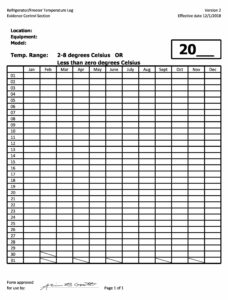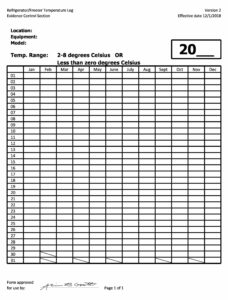The integrity of temperature-sensitive goods depends on efficient Cold Chain Management. This includes everything from proper storage to distribution and monitoring temperatures. A cold chain management policy is essential to ensure that perishable items maintain their quality and safety throughout the supply chain.
This policy template outlines best practices for temperature-controlled environments. By following these guidelines, businesses can protect their products, ensure regulatory compliance, and maintain consumer confidence.
Cold Chain Management: Key Elements
To achieve effective cold chain management, adherence to key elements is crucial. These elements encompass:
- Temperature Monitoring: This entails continuously monitoring and recording temperatures throughout the supply chain to ensure products remain within the specified temperature range.
- Transportation and Storage: Transportation methods, such as refrigerated vehicles and insulated containers, should maintain proper temperatures. Storage facilities must also be temperature-controlled and equipped with monitoring systems.
- Packaging and Insulation: Packaging materials should insulate and protect products from temperature fluctuations. Additionally, proper labeling indicating temperature requirements is essential.
- Staff Training and Accountability: Employees must receive training on cold chain management procedures. They should be held accountable for maintaining temperature logs and adhering to protocols.
- Emergency Response Plan: A plan should be in place to address temperature deviations, power outages, or equipment failures. This plan should outline steps to minimize product loss and maintain product integrity.
Benefits of a Cold Chain Management Policy
Implementing a cold chain management policy offers numerous benefits, including:
- Product Quality and Safety: Maintaining proper temperatures ensures product quality and safety, minimizing the risk of spoilage and contamination.
- Regulatory Compliance: Adherence to temperature requirements is crucial for regulatory compliance in the food, pharmaceutical, and healthcare industries.
- Reduced Costs: By preventing spoilage and maintaining product quality, businesses can reduce costs associated with product loss, recalls, and customer complaints.
- Improved Customer Satisfaction: Ensuring product quality and safety enhances customer satisfaction, leading to increased brand loyalty and positive reputation.
- Enhanced Supply Chain Efficiency: Streamlined processes and improved coordination among supply chain partners optimize efficiency and reduce lead times.
FAQ on Cold Chain Management Policy Template
What is the significance of temperature monitoring in cold chain management?
Temperature monitoring ensures that products remain within specified temperature ranges throughout the supply chain. It helps identify deviations promptly, allowing for corrective actions to maintain product quality and safety.
How can a business ensure regulatory compliance with a cold chain management policy?
Regulatory compliance is achieved by adhering to temperature requirements and maintaining proper documentation. This includes records of temperature monitoring, training programs, and emergency response plans. Regular audits and reviews help ensure ongoing compliance.
How does a cold chain management policy impact product quality and safety?
A well-implemented cold chain management policy minimizes temperature fluctuations and prevents spoilage or contamination. This preserves product quality, maintains freshness, and ensures the safety of perishable goods.

